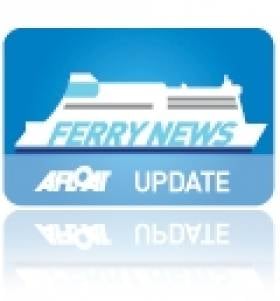Displaying items by tag: Southern Corridor
Southern Corridor: 'Enormously Positive' News for Pembrokeshire-Ireland Ferry Services
St. Georges Channel ferry routes between Fishguard and Pembroke Dock, Pembrokeshire, and Rosslare in Co. Wexford look set to sail into calmer waters this summer.
Operator Irish Ferries has announced that an existing Dover-Calais cruise ferry, the Isle of Innisfree, will replace the chartered P&O Ferries freight ferry, Norbay, on the Pembroke-Rosslare route. The ropax had been originally on the Dublin-Holyhead route before the debut of cruise-ferry Oscar Wilde on the ‘Central Corridor’ that connects between the Irish capital and North Wales.
In addition, rival operator Stena Line has announced changes to its Irish Sea management team, which will be divided into two sections. This will see ships on the ‘Southern Corridor’ managed separately from other services on the Irish Sea and on the North Channel.
The Swedish company says that this change to its management structure will "drive growth in the region.".
In reaction to both recent developments, they have been hailed as ‘enormously positive’ by politicians in both the regions of Pembrokeshire and Wexford in south-east Ireland.
More from the Western Telegraph on these recent announcements.
Stena Line to Resume ‘Express’ Service
In addition to the 'Express' service the St. Georges Channel route is served by the year-round operated conventional ferry, Stena Europe (1981/24,828 grt). The 1,386 passenger / 564-vehicle ferry recently underwent a £2m refurbishment and takes a more leisurely passage time of 3 hours 30 minutes.
For information on both fast-ferry and conventional ferry sailing schedules click HERE.
Stena's Southern Sailings
In the meantime freight-only ferry Stena Seafarer is operating the St. Georges Channel route having arrived at Rosslare on a repositioning voyage from Belfast on 29th March.
Stena Seafarer (1975 / 10,957grt) was one of a trio of freight-ferry sisters that served the Larne-Fleetwood port route until its closure in December. Like her sisters Stena Leader (1975 / 12,879grt) and Stena Pioneer (1975 / 14,426grt) they were built at the West German shipyard of J.J. Sietas in Hamburg.
Stena Seafarer's sisters remain laid-up in Belfast and with each vessel over 35 years in service it would seem likely there are nearing the end of their careers, at least on the Irish Sea.
To provide additional passenger capacity the Stena 'Express' fast-ferry service will return to the southern corridor route between 1 July-4 September. The high-season sailings as usual will be operated by the InCat built Stena Lynx III which is to operate a daily single round trip in tandem with Stena Europe.

























































